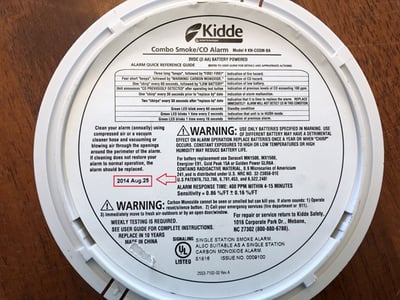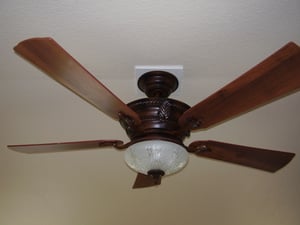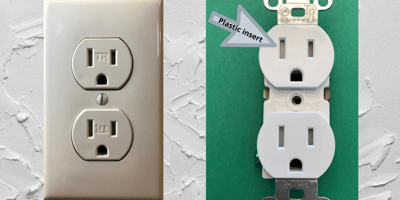As the weather gets warmer and we all start to enjoy the sunshine, it's important to remember that with a new season comes different safety concerns. As a homeowner, you should be aware of electrical tips for spring and summer so you can keep your home safe and free from any potential hazards. From GFCI outlets to ceiling fans, there are some simple steps you can take now to ensure your home is ready for the warmest months of the year. In this blog post, we'll cover five key electrical tips for homeowners in spring and summer - so let's get started!

1. Test GFCI outlets
Ground fault circuit interrupter (GFCI) outlets should always be tested periodically, especially on the outside of your home. These outlets must be able to withstand environmental exposure and should be checked consistently in order to ensure they are functioning properly. GFCI outlets are important safety devices that can help protect your family from electric shocks and other electrical hazards, so it is essential to check them regularly. To test a GFCI outlet, you should press the reset button as well as the test button in order to ensure that the outlet is working correctly. If either one fails, then it is important to replace the outlet right away.
It is important to remember that GFCI outlets should be replaced by a professional electrician. These outlets are responsible for providing essential protection against shocks and other electrical hazards, so it is important for them to be properly installed.

2. Smoke detectors and carbon monoxide detectors
Smoke detectors and carbon monoxide detectors must also be tested regularly, at least every six months. This is because smoke and carbon monoxide can be exceptionally dangerous, even deadly in some cases, and you need to ensure that your detectors are in working order. In addition to testing the detectors every six months, it's important to replace the batteries at least every 12 months. This helps to ensure that your smoke and carbon monoxide detectors will be ready in case of an emergency.
Smoke detectors are essential safety devices that should be installed in all homes, but it is important to remember that they do not last forever. In fact, most smoke detectors have a shelf life of 10 years - so it's important to keep track of how long you've had your detectors and replace them when necessary. This is especially true for older models, as newer models often come with longer lifespans. Even if your smoke detector appears to be functioning correctly, you still need to replace it after 10 years in order to ensure optimal safety for your family.
Check out our comprehensive blog here to read more about smoke detector and carbon monoxide detector safety for homeowners.

3. Ceiling fan maintenance
Ceiling fans are great for cooling your home during the warmer months, but it's important to remember to clean and maintain them as well. Regularly wiping down the blades with a soft cloth will help prevent dust buildup, which can cause issues like poor airflow. You should also check the direction of the blades - in spring and summer, the fan should rotate counter-clockwise in order to push cool air downward. If you notice any strange noises while the fan is running, it's important to contact a professional electrician right away - there could be an issue with the wiring or motor that needs to be addressed.
Click here to read our blog about the top factors you should consider when buying or having a ceiling fan installed in your home.
4. Landscape lighting and outdoor lighting
While you are planting spring flowers, it's also important to check your landscape lighting. This is especially true for areas where you plan to spend a great deal of time outdoors - such as pathways and decks - so you can enjoy your yard during the evening hours. To ensure that all of your exterior landscape lights are in good working order, make sure they are securely mounted and not exposed to moisture. Additionally, make sure they are properly connected to a ground fault circuit interrupter (GFCI) outlet in order to prevent any electrical shocks.
Outdoor lighting must also be inspected before the warmer weather hits, as these lights have been exposed to extreme temperatures changes throughout the winter. Make sure all bulbs are working properly, and replace any that are not. Be sure to check the wiring as well; if it looks worn or frayed, you should have a professional electrician inspect it more closely. Additionally, make sure all outdoor lighting fixtures are securely mounted so they don't become loose during strong gusts of wind.

5. Check receptacle outlets
In addition to testing GFCI outlets, it is important to check all other receptacle outlets in your home for any signs of potential danger. Be sure to look for warm, discolored, or loose outlets as these can be a sign of an electrical issue. It's also important to listen for any crackling, buzzing, or humming noises coming from the outlets. If you notice any of these signs, it's best to call in a professional electrician right away.
Tamper resistant outlets are required to be installed in a number of different settings, including residential homes, per the National Electrical Code (NEC). Click here to read more about tamper resistant outlets.
Spring and summer are the perfect time to make sure your home is ready for the warmer months. By following these five electrical tips, you can help keep your family safe from potential hazards like electric shocks or fires caused by faulty wiring. Testing GFCI outlets, inspecting landscape lights, checking smoke detectors and carbon monoxide detectors, and maintaining ceiling fans will ensure that all of your electrical systems are in working order when it comes time to enjoy the warm weather outdoors. With a little bit of effort now, you can rest assured that everything is running safely and efficiently - so what are you waiting for? Get started on making sure your home’s electricity is up-to-date today!



